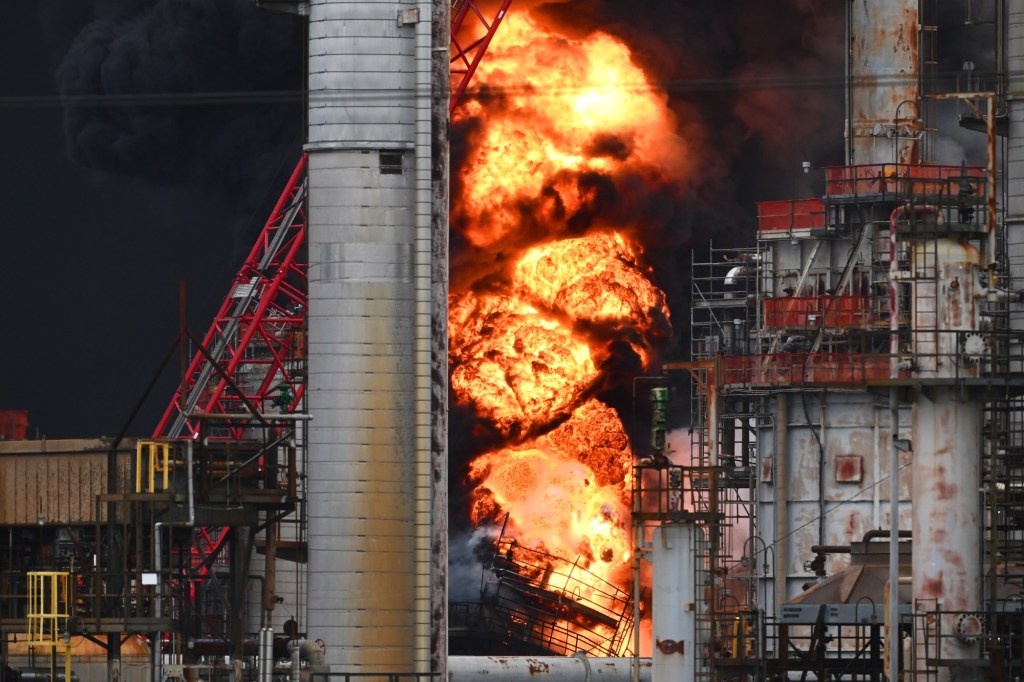

If you recently stopped to fill up your car or truck and thought it cost more than the last trip to the gas station, you are not imagining things.
Gas prices have taken a sharp turn higher in the past two weeks. According to AAA, the average price of a gallon of regular-grade gasoline in the San Diego area on Thursday stood at $4.761, a jump of 23 cents compared to Jan. 28.
Fuel analysts say the markup is largely due to an explosion at the Martinez Refining Company in Northern California on Feb. 1. The fire that sent plumes of smoke rising about 200 feet led to medical personnel tending to six refinery workers.
The refinery is still offline, constraining gasoline markets across the state, including Southern California.
“The two markets are linked primarily by shipping, by barges and tankers, that go north and south,” said David Hackett, president of Stillwater Associates, a transportation energy consulting company in Irvine. “When there’s a big disruption like the one at the Martinez refinery, they look to the south to get some gas (to Northern California). So there will be some flow from L.A. up there — and San Diego is supplied by the refineries in L.A.”
An initial report indicates the fire was caused by a leak of hydrocarbon gas from the plant’s processing units.
If it’s much consolation to San Diego motorists, the explosion has resulted in even more dramatic price increases in Bay Area communities near the town of Martinez.
The average price in Vallejo, for example, has leaped 45 cents in the past week and drivers in Oakland are paying $4.983 per gallon — 61 cents more than they paid one month ago.
The Martinez facility accounts for about 10% of California’s capacity for refined fuels.
Contributing to the run-up in prices is the fact that at least three other refineries in the state recently closed — or are about to close — parts of their operations for seasonal maintenance.
“It’s shoulder season,” said Patrick De Haan, head of petroleum analysis at GasBuddy. “Part of the reason why these refineries are already undergoing maintenance in January and February is because demand is only going to up in the months ahead” as the summer driving season approaches. “If they waited another month or two to do maintenance, then it gets problematic.”
Another factor: Even though it’s February, this is the time of year when California refineries have started their annual switch from winter-blended fuel to the summer blend. While the state’s unique summer mixture is less polluting, it’s about 20 cents per gallon more expensive than winter blends because of the oxygenates required in the fuel.
De Haan and Hackett each said threats by President Donald Trump to place tariffs on oil imports have not contributed to the price increase in California. Canada and the Trump administration agreed on Feb. 3 to a 30-day pause to avoid a potential 10% tariff on energy resources.
If a disruption of Canadian oil supplies eventually occurred, De Haan said it would hit drivers in midwestern states hard but California consumers would not see much of an increase.
“About 50-65% of the crude oil in the Midwest comes from Canada,” he said. “Some refineries there are extremely susceptible.”
In the meantime, how much higher will prices go in the San Diego area?
“Wholesale prices are pulling back; that’s the good news,” De Haan said. “It may take a couple days for the retail channels to catch up. I would hope that by early to the middle of next week the increases will really start to slow down.”
In an encouraging sign, the futures price of Brent crude oil — the benchmark for international markets — has fallen $7 in the past month, dropping from $82 a barrel on Jan. 15 to $75 on Feb. 13.
In California, the international price is more important than the price of domestically produced crude (known as West Texas Intermediate) because the Golden State relies on overseas fuels. In 2023, 61% of oil supply sources to the state’s refineries came from foreign imports, according to the California Energy Commission.






